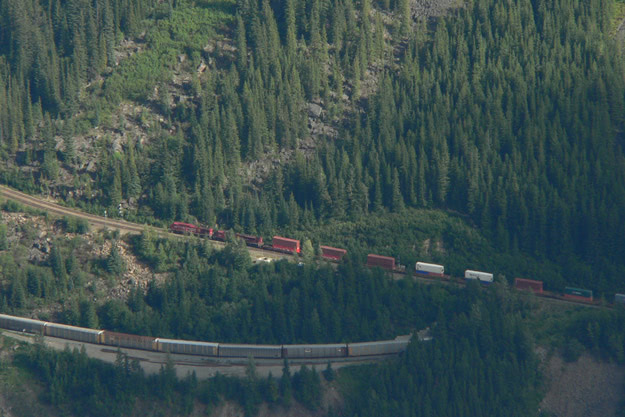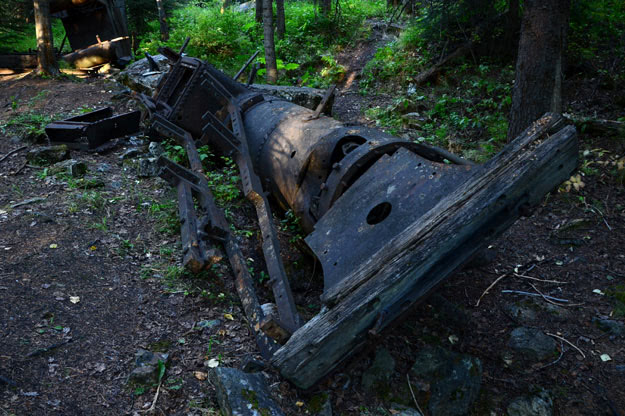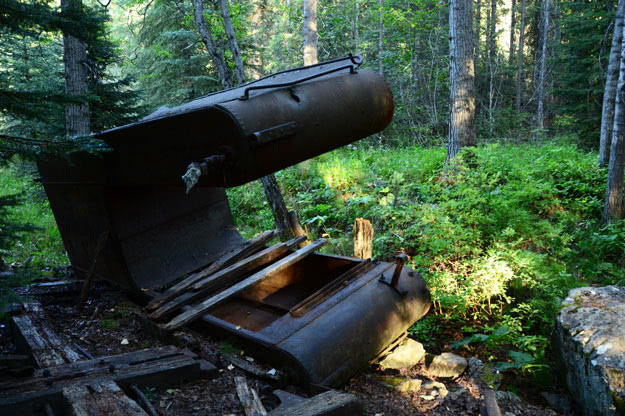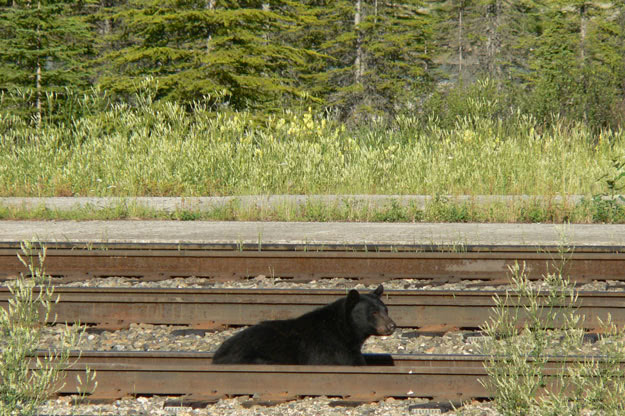The town of Field is a true hotspot for train watchers and history buffs with an interest in Canada's westward development in the late 1800’s. The railway still has an active and visible presence, with road crossings, crew changes, and maintenance a daily occurrence and both freight and tourist trains passing through on a regular basis.

The Big Hill
The Big Hill that spans the Continental Divide between Field and Lake Louise presented a massive engineering challenge for workers pushing to complete the Canadian Pacific Railway. Steep mountain slopes and narrow valleys between Wapta Lake and the Field townsite severely limited the number of viable routes available, and in a rush to complete construction the Canadian government engineering team opted to forge ahead with a track graded at 4.4% rather than wait for a lengthy tunnel to be bored through Mount Stephen. This was twice the usual grade limit, and the decision bore immediate consequences as the first train that attempted to navigate the pass went off the rails and right into the Kicking Horse River, with three casualties.
Switches were built to mitigate the problem, allowing conductors to optionally bypass the main rail line in favour of an uphill track to stop trains when runaways were feared. Paired with speed restrictions and thorough brake testing, the hope was that these these changes would provide a workable solution for an imposing engineering problem.
Alas, it was not to be. Trains crashed with disturbing regularity, and it was clear a more robust solution was necessary. But a true fix would take time to plan, fund, and execute and it would be 25 years before the workaround would see the light of day.
It's possible to explore the locomotive history of the park first-hand in a number of ways.
The Spiral Tunnels
At the heart of the difficulties was the rugged nature of the Rocky Mountain landscape, which presented a myriad of challenges aside from the steep grade. Initial proposals for rail improvements included an alternate route that hugged the slopes on the south side of the Kicking Horse Valley. But this and other proposals were disqualified because they were found to be vulnerable to landslides and avalanches, which had plagued CPR operations at other sections along the line, including a brutal avalanche in 1899 that destroyed the station at Rogers Pass. One by one, the frugal proposals were eliminated and CP Rail's chief engineer signed off on a much more ambitious project that would solve the problem once and for all.

The solution called for a pair of loops that would be tunneled deep into the valley walls, with the first looping 0.91km beneath Cathedral Mountain on the south side of the valley and doubling back underneath itself before crossing the Kicking Horse River before the second tunnel loops through Mount Ogden on the north. The effect of this would be to reduce the grade to a more acceptable 2.2%, in line with CP regulations. Completed over the course of three years from 1907 to 1909, the monumental engineering effort resulted in a massive decrease in derailment incidents. However, to this day the Big Hill remains one of most challenging stretches of track in Canada.
The Spiral Tunnels have been recognized as part of the Kicking Horse Pass National Historic Site of Canada. Both tunnels are on view from established viewpoints in the park, where you can safely watch trains pass through:
- The Upper Spiral Tunnel (Cathedral Mountain) is visible from a viewpoint on Yoho Valley Road, 2.3km from the highway
- The Lower Spiral Tunnel (Mt. Ogden) viewpoint is just off the Trans-Canada Highway 7.4km east of Field
On a typical day 25 to 30 trains might make the journey, and there's plenty of signage that explains the history in more detail.
A Walk in the Past

Remnants of the Spiral Tunnels' tumultuous past are on full view on Yoho's Walk in the Past trail, where abandoned portions of a narrow-gauge locomotive used during construction of the tunnels can be found trailside. Starting at the Kicking Horse Campground, follow a series of mauve interpretive signs along one of the more moderate family trails in the park. At 3km and with an elevation gain of 90m, the hike should take most hikers about an hour and a half.

CPR Telegraph Building
One of the better places to watch trains come and go in the Field townsite is the CPR's historic stone and brick telegraph building (c. 1931), nestled between a stand of shade-bearing trees. Replete with impressive masonry, this is the only pre-WW2 building left standing in Field. For decades, it was a hotbed of activity for stopping passengers who rushed to send telegrams on short layovers in town. It's also the first building you'll encounter when crossing the bridge into town, so it's impossible to miss. Here you'll have a great view of the nearby tracks without trespassing on CP property.

A Hazard for Wildlife
It wasn't just human lives put at risk by the arrival of the transcontinental railway in the Rockies. For over a century, trains have been one of the more prominent threats to wildlife in the Rocky Mountain National Parks. Buffaloberry bushes flourish trackside at the peak of berry season, attracting gorging bears. Occasionally an elk, deer, or moose carcass might attract a hungry bear scavenging for a protein-heavy meal. The problem is exacerbated by westbound freight cars carrying grain from the prairies, which often leaks directly on the tracks and attracts bears and other animals on the hunt for a free snack. And blind corners winding through thick tree stands reduce visibility while muffling the sounds of oncoming trains. All of these factors combine to put the animals at greater risk of collision. The tensions between the conservation mandate of the National Parks and ongoing railway usage have been an ongoing challenge. Fortunately, academic researchers have been working diligently to study animal-train interations in the hopes of coming up with pragmatic solutions for mitigating impacts.
